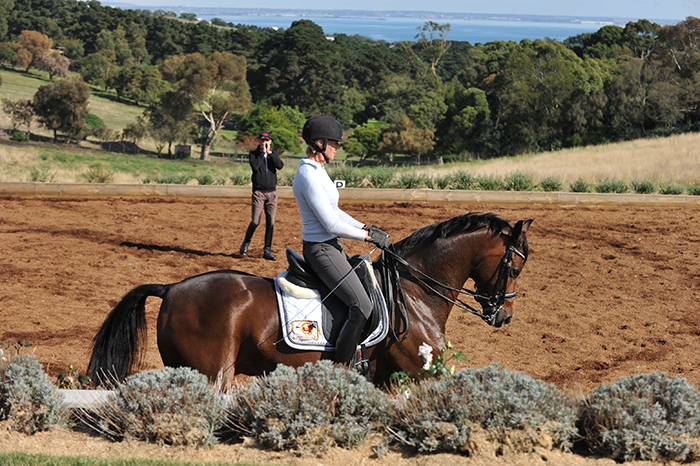
It just has to be the most sublime setting for a dressage lesson, in the distance the hills perfectly frame Westernport Bay as the perfectly manicured outdoor arena is bathed in the glow of an idyllic autumn day. It kind of adds to the picture that the guy standing in the middle of the arena happens to be one of the world’s most genius rider / trainers, Steffen Peters.
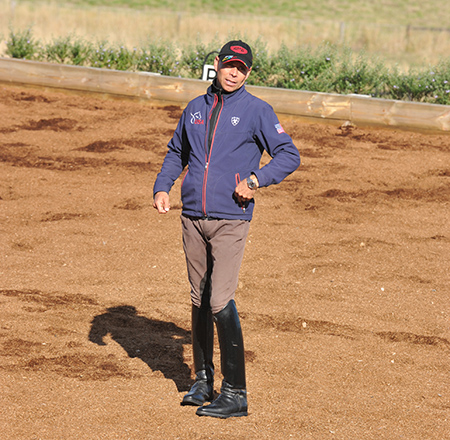
Watching him work, you can understand why Mary Hanna is keen to welcome Steffen to her training stables, he is simply one of the most brilliant coaches I have ever seen in action – ever. Of course, it is not because he is telling his students to do anything different, Steffen’s training is firmly within the boundaries of the German training scale, which is hardly surprising since Steffen was born and grew up in Germany, learning his craft with that great defender of the classical, progressive training path, Klaus Balkenhol.
But there are lots and lots of dressage coaches who can spout the basic tenets of ‘the scale’ alas not with the subtly of insight of Steffen, not with that fine tuned feel that comes from riding at the highest level on a daily basis and not with the same gentle insistence that you do it – now, and perfectly.
Steffen is not only a horse friendly trainer, he is a rider friendly trainer, encouraging and supportive, expecting his students to make their own decisions, and quick to comment – ‘I approve’ – when the rider has taken the initiative, and always with the most charming smile…
I’d come to basically chat with Steffen about the state of the art of dressage in the world today and not get involved in the nitty gritty of his lessons, but I just couldn’t resist pulling the notebook out as he worked with Sara MacDonald and Adlanta Rose.
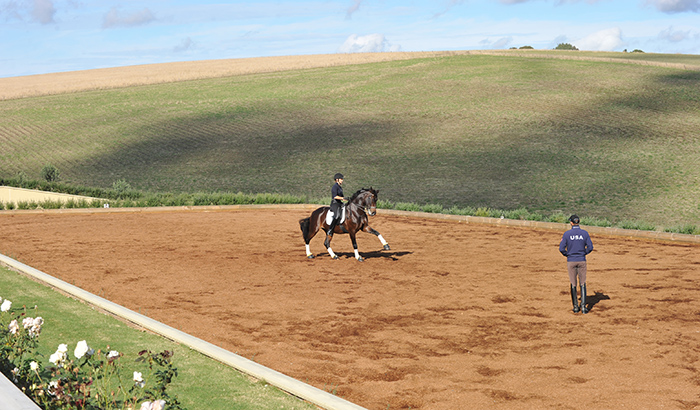
Steffen is working with Sara on her flying changes, and his message, well it is simple: “Simple aids, don’t give quick aids, simple aids.”
And if the mare doesn’t listen?
“Now you’ve got to make your point, if she doesn’t listen to a light aid, make your point, then ask again with a light aid.”
I find Steffen such a refreshing trainer since while he teaches with his eyes very firmly on the likely scores from the judges’ boxes, at the same time, he is seeking to promote a style of dressage that is light and beautiful.
“You have to decide when to ride with a bit more expression, but I agree, first you have to keep the safety.”
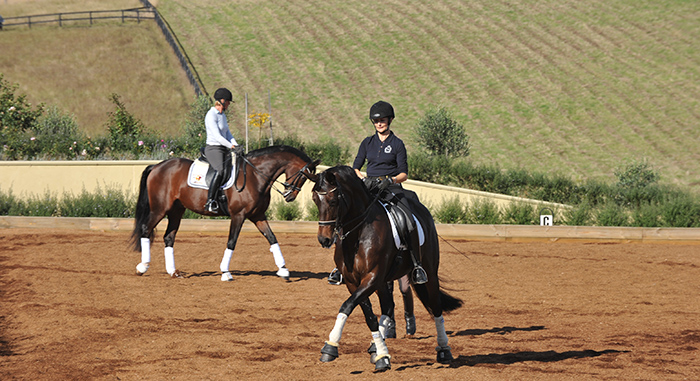
“Walk a second. What do you think about that walk? It is a 7 but with a bit more work, it could be an 8.”
Steffen is super picky on rider position:
“When you sit to the left, your right elbow wants to go out. All these things are not important if you are riding an average horse, but this is an international horse.”
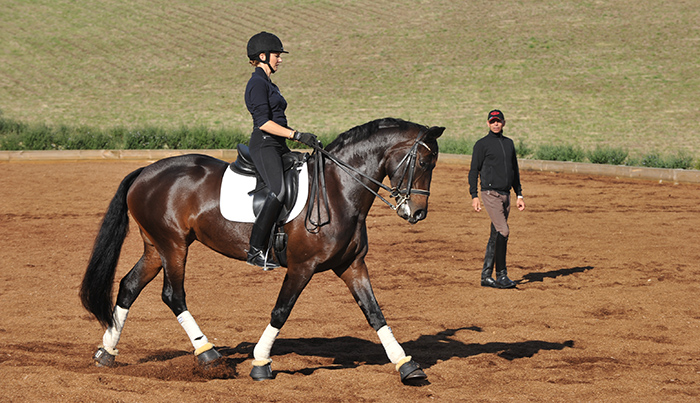
And holy hell, you suddenly realize that he is right, what you always thought was a good horse, an excellent horse, really does look like a horse that you can see marching into one of those big arenas over the other side of the world with a flag on its saddle cloth…
Some more changes across the diagonal:
“Think about your geometry, you started your changes too early. Don’t let the canter get hectic. Good – no more changes. She has got too concerned about the changes, you had your chance to make corrections, now leave it. Be careful that everything comes from your calf, if the calf is not enough, then use the spur. You can release tension in the changes by pushing forward with your calf. When you use your spur, the canter gets quicker, we like that in the pirouettes, but not for extensions.”
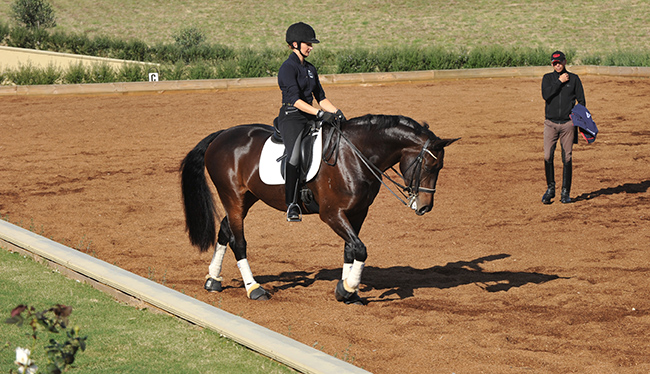
It is time for a walk break, and once again, Steffen stresses that every second on the horse counts…
“There you have that longer walk, ask for it every day, expect it. You are sitting in a better position in the centre, if the driving aids don’t work from there, make your point. Keep your legs underneath you so your stirrup leathers are perpendicular to the ground.”
“Show the lightness, expression and beautiful self-carriage that is the essence of the sport. The way she carries herself, the judges expect a perfect square halt, don’t disappoint them.”
“Now she is more sensitive, start to ride the half pass with your thigh and knee, then after a couple of strides, ride her with the lower leg.”
“Okay trot around the arena, and test the transition to piaffe but don’t ride it. Test the connections, then go into piaffe. You are working too hard, trust her, the spur needs to correct, it can’t maintain the piaffe.”
And it’s rider position once again…
“Don’t lean back, give her back a place to go, don’t contain her with your seat. Three or four honest steps of piaffe are better than five or six where you are begging her to do piaffe. 90% of piaffe is already established, she has the idea of piaffe.”
“Okay, let’s walk. Heels down, give her a chance to listen to your calf, she’s got to offer the sensitivity and length of stride… it’s about simplicity and sensitivity. With this horse it is realistic to aim for 80%. She has to educate the judges a little. If you start out with a beautiful half pass, with a consistent angle in shoulder in, then they are ready to give you good marks. It is all a mind set – put it in their face…”
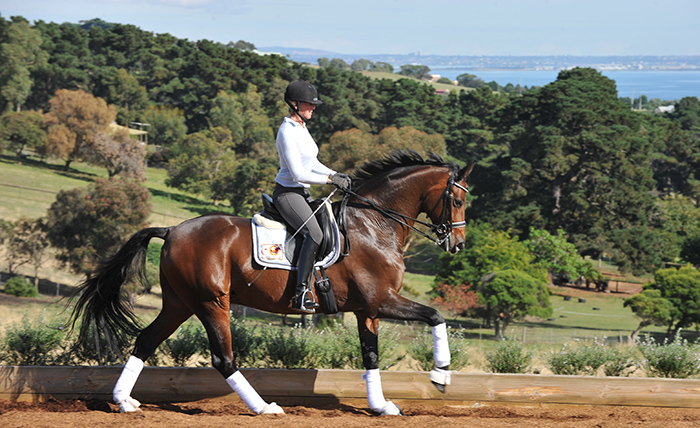
The next face that was entering arena is one of the most beautiful in international dressage, Sancette (sorry Mary). The Sandro Hit gelding is one of those horses with WOW written all over him, he has got movement to burn, but he also looks a little tricky to ride since he can use that same athleticism to escape the rider’s influence by changing his frame, and Steffen, is quick to highlight the issue:
“Be picky, don’t let him get too low, use your whip when he changes the connection (this is a feature of Steffen’s work, the way he gets his students to use the whip, not as a good forward tool, but as a ‘I didn’t like that, pay attention’ aid) In the warm up he can relax, but you must make sure that every stride is steadily connected.”
“I like this frame, go to shoulder fore on the circle without changing the frame…”
And just to make it a little tougher…
“On the quarter line, shoulder in right, shoulder in left, without changing the frame.”
And Sancette tries to dive…
“Don’t accept it. It makes sense that he does it when we change the flexion, but do not accept it. Now that is a really good position, I love it, no matter what happens, don’t let him change it.”
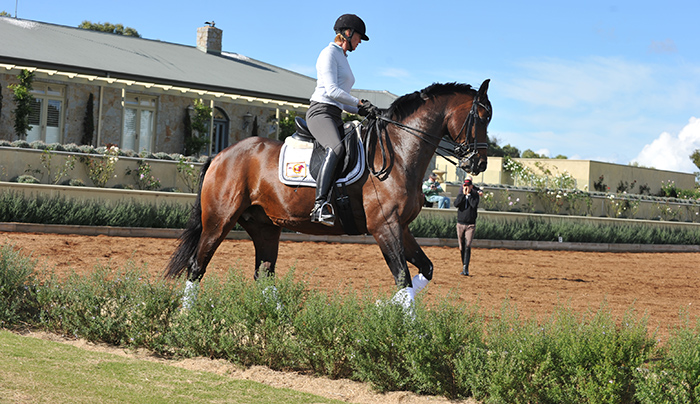
“Now on the quarter line again, and this time shoulder fore, not shoulder in, right then left, be fussy in the change over don’t let him tip you forward when you correct him.”
“75% of the work with him is just guiding him in this consistent uphill frame.”
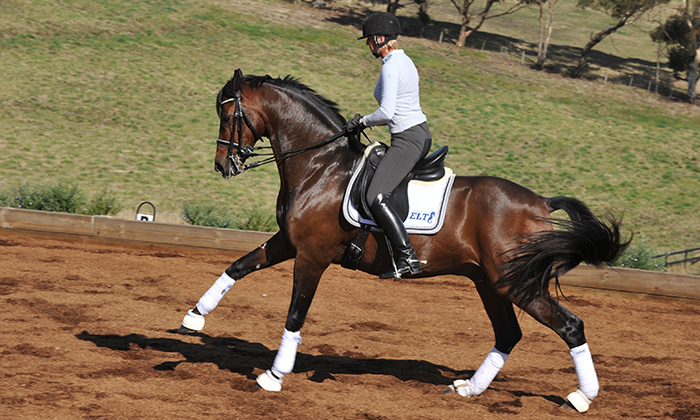
“Now in the changes, dig your knee into the saddle to get the straightness. Everything depends on a true forward reaction to the leg.”
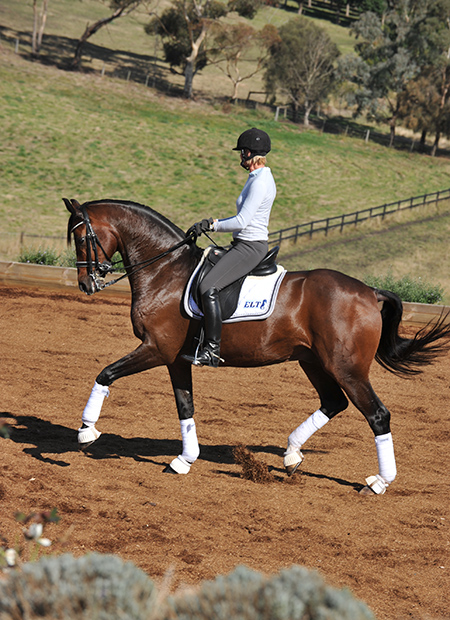
Mary is riding a few steps of passage, Steffen wants a little more: “Keep him in passage longer, so it is more honest, he doesn’t have to do it better, but try to get so he offers the passage.”
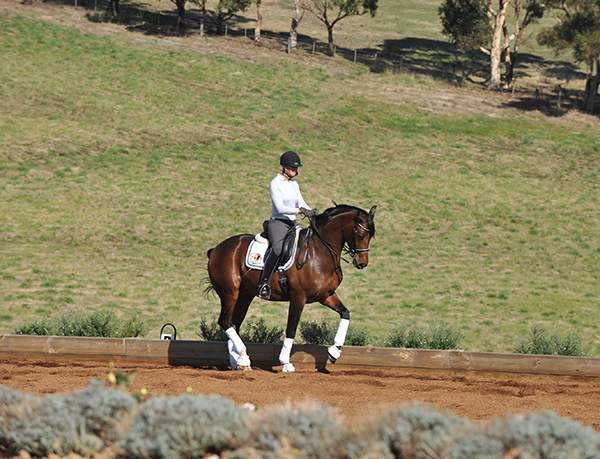
In the piaffe, Steffen wants it quicker: “Think about making it quicker, he’s sitting, but if you get him quicker that it is easier for him on the transition out, and in the transition into piaffe, think about two steps for the transition not one, then you will get more activity, and the transitions piaffe, passage, piaffe, are from the knee to the calf.”
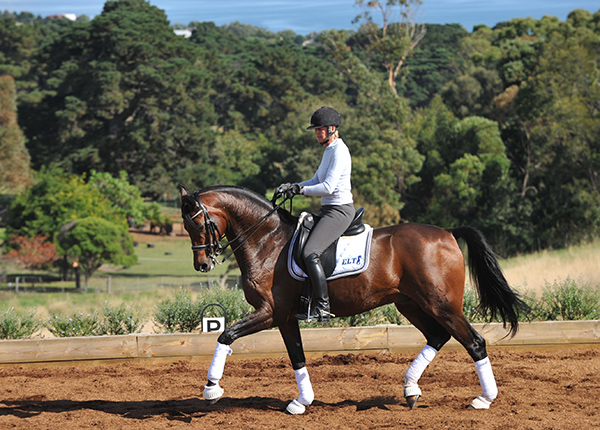
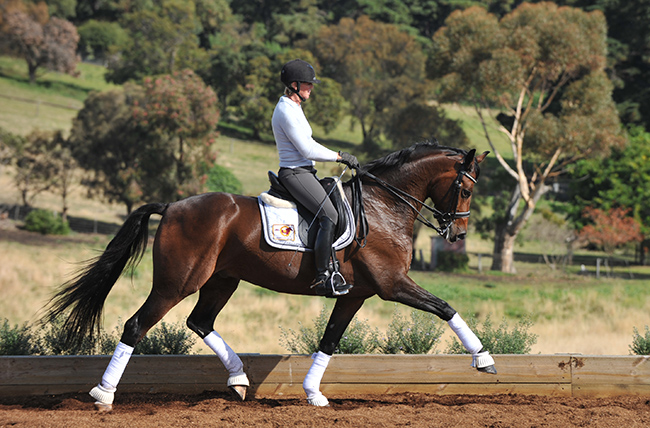
Again in the extended trot, Steffen was stressing that it was not the movement that Mary had to worry about but the frame: “All you have to worry about is consistency in the neck and contact…”
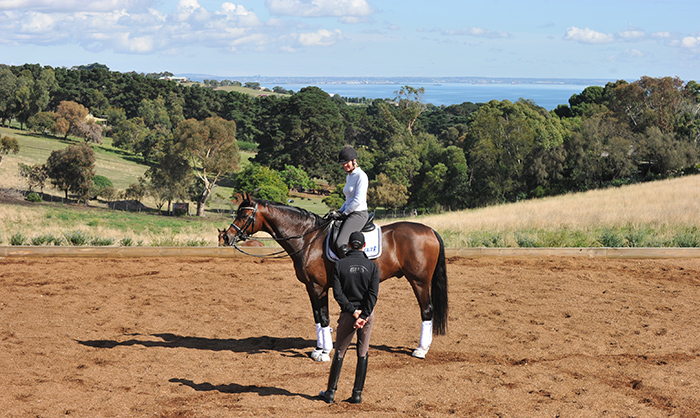
Later I remarked to Steffen that he seemed to have a very individual take on dressage – the world seems to divide into people who say ‘judging in dressage is so corrupt and terrible and I am so perfect that I will stay home and ride for my mirrors’ and the other side that says ‘the judges are really corrupt so I don’t care what I do, I’ll do it to get some marks’ – you seem to have found a very pleasant middle way, saying I’ll ride for the judges but I’ll ride for the judges in such a way as to make them appreciate a lightness and correctness, and draw the marks in the right direction’…
“I think you’ve nailed it. The bottom line is that we all have to know what the international standard is all about, we have to educate ourselves, each and every year, at Aachen or the World Games, what the top five horses look like. What I liked when the question was asked at the WEG, what really stood out in the top three horses? The great answer from the judges was that they didn’t just see expression and power, ‘but we saw it with harmony’. I think that is definitely where the sport is getting back to. I think we lost that for a little while and now I think the sport is right on a great track.”
“The bottom line has to be that it is true dressage, that we go back to self carriage, suppleness…”
Breed to Sandro Hit, or one of his many sons, for a successful and beautiful dressage horse, a top brood mare, or you might even get a top eventer like Chris Burton’s Bronze Medal ride at Rio, Santano! Go to: www.ihb.com.au
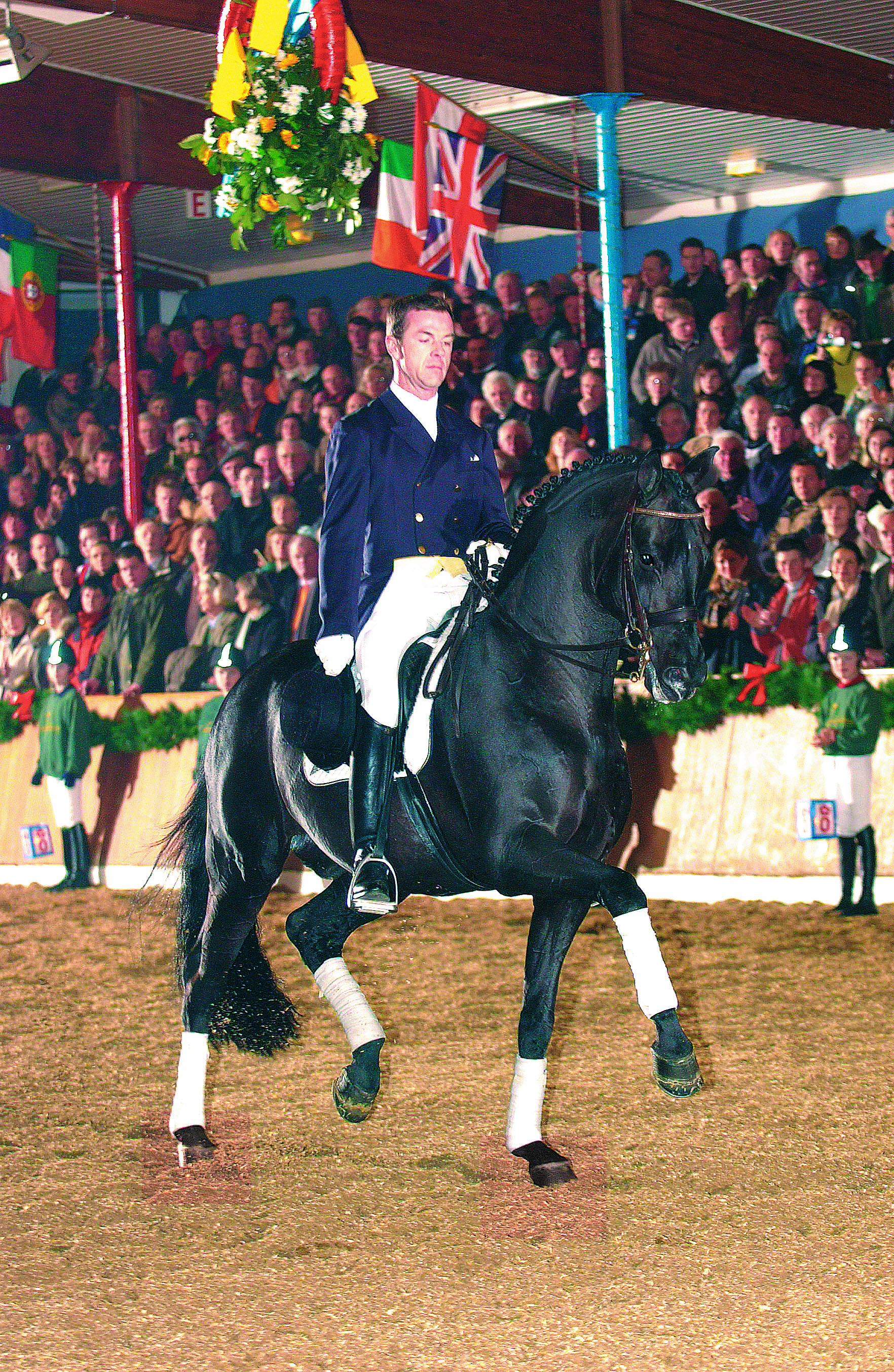


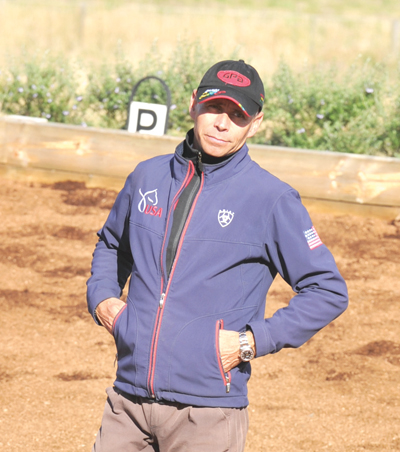
Wow, a lesson with Steffen is definately on my bucket list, Sharon Levy.